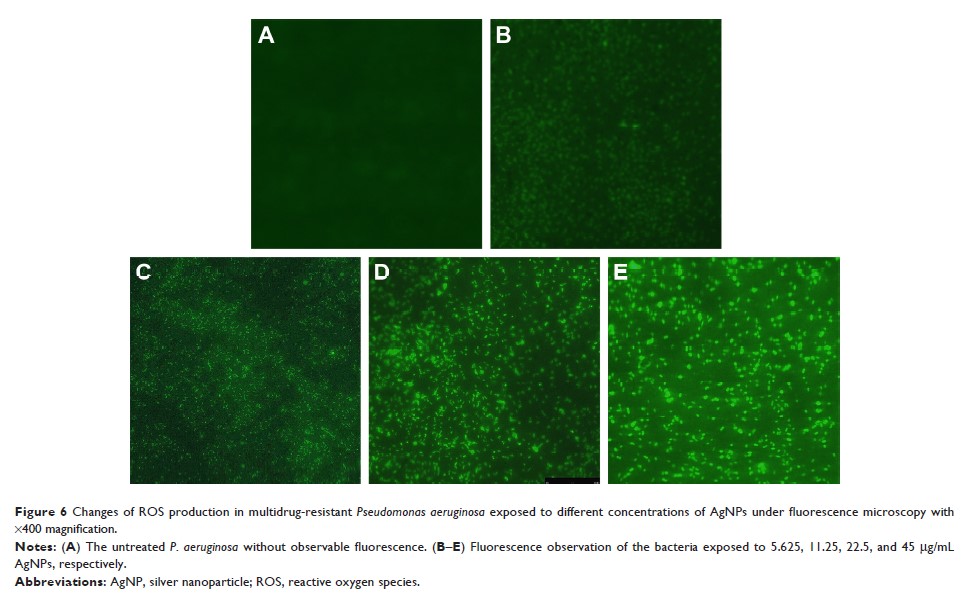108384
论文已发表
注册即可获取德孚的最新动态
IF 收录期刊
- 3.4 Breast Cancer (Dove Med Press)
- 3.2 Clin Epidemiol
- 2.6 Cancer Manag Res
- 2.9 Infect Drug Resist
- 3.7 Clin Interv Aging
- 5.1 Drug Des Dev Ther
- 3.1 Int J Chronic Obstr
- 6.6 Int J Nanomed
- 2.6 Int J Women's Health
- 2.9 Neuropsych Dis Treat
- 2.8 OncoTargets Ther
- 2.0 Patient Prefer Adher
- 2.2 Ther Clin Risk Manag
- 2.5 J Pain Res
- 3.0 Diabet Metab Synd Ob
- 3.2 Psychol Res Behav Ma
- 3.4 Nat Sci Sleep
- 1.8 Pharmgenomics Pers Med
- 2.0 Risk Manag Healthc Policy
- 4.1 J Inflamm Res
- 2.0 Int J Gen Med
- 3.4 J Hepatocell Carcinoma
- 3.0 J Asthma Allergy
- 2.2 Clin Cosmet Investig Dermatol
- 2.4 J Multidiscip Healthc

抗多药耐药铜绿假单胞菌的银纳米粒子的抗菌活性及其机制
Authors Liao S, Zhang Y, Pan X, Zhu F, Jiang C, Liu Q, Cheng Z, Dai G, Wu G, Wang L, Chen L
Received 18 October 2018
Accepted for publication 17 January 2019
Published 25 February 2019 Volume 2019:14 Pages 1469—1487
DOI https://doi.org/10.2147/IJN.S191340
Checked for plagiarism Yes
Review by Single-blind
Peer reviewers approved by Dr Colin Mak
Peer reviewer comments 3
Editor who approved publication: Dr Lei Yang
Background: The threat of drug-resistant Pseudomonas aeruginosa requires
great efforts to develop highly effective and safe bactericide.
Objective: This
study aimed to investigate the antibacterial activity and mechanism of silver
nanoparticles (AgNPs) against multidrug-resistant P. aeruginosa .
Methods: The
antimicrobial effect of AgNPs on clinical isolates of resistant P. aeruginosa was
assessed by minimal inhibitory concentration (MIC) and minimal bactericidal
concentration (MBC). In multidrug-resistant P. aeruginosa , the
alterations of morphology and structure were observed by the transmission
electron microscopy (TEM); the differentially expressed proteins were analyzed
by quantitative proteomics; the production of reactive oxygen species (ROS) was
assayed by H2DCF-DA staining; the activity of superoxide dismutase (SOD),
catalase (CAT) and peroxidase (POD) was chemically measured and the
apoptosis-like effect was determined by flow cytometry.
Results: Antimicrobial
tests revealed that AgNPs had highly bactericidal effect on the drug-resistant
or multidrug-resistant P. aeruginosa with the MIC range of 1.406–5.625
µg/mL and the MBC range of 2.813–5.625 µg/mL. TEM showed that AgNPs could enter
the multidrug-resistant bacteria and impair their morphology and structure. The
proteomics quantified that, in the AgNP-treated bacteria, the levels of SOD,
CAT, and POD, such as alkyl hydroperoxide reductase and organic hydroperoxide
resistance protein, were obviously high, as well as the significant upregulation
of low oxygen regulatory oxidases, including cbb3-type cytochrome c oxidase
subunit P2, N2, and O2. Further results confirmed the excessive production of
ROS. The antioxidants, reduced glutathione and ascorbic acid, partially
antagonized the antibacterial action of AgNPs. The apoptosis-like rate of
AgNP-treated bacteria was remarkably higher than that of the untreated bacteria
(P <0.01).
Conclusion: This
study proved that AgNPs could play antimicrobial roles on the
multidrug-resistant P. aeruginosa in a concentration- and time-dependent
manner. The main mechanism involves the disequilibrium of oxidation and
antioxidation processes and the failure to eliminate the excessive ROS.
Keywords: silver
nanoparticles, AgNPs, antibacterial activity, mechanism, Pseudomonas aeruginosa ,
multidrug-resistant bacterium
